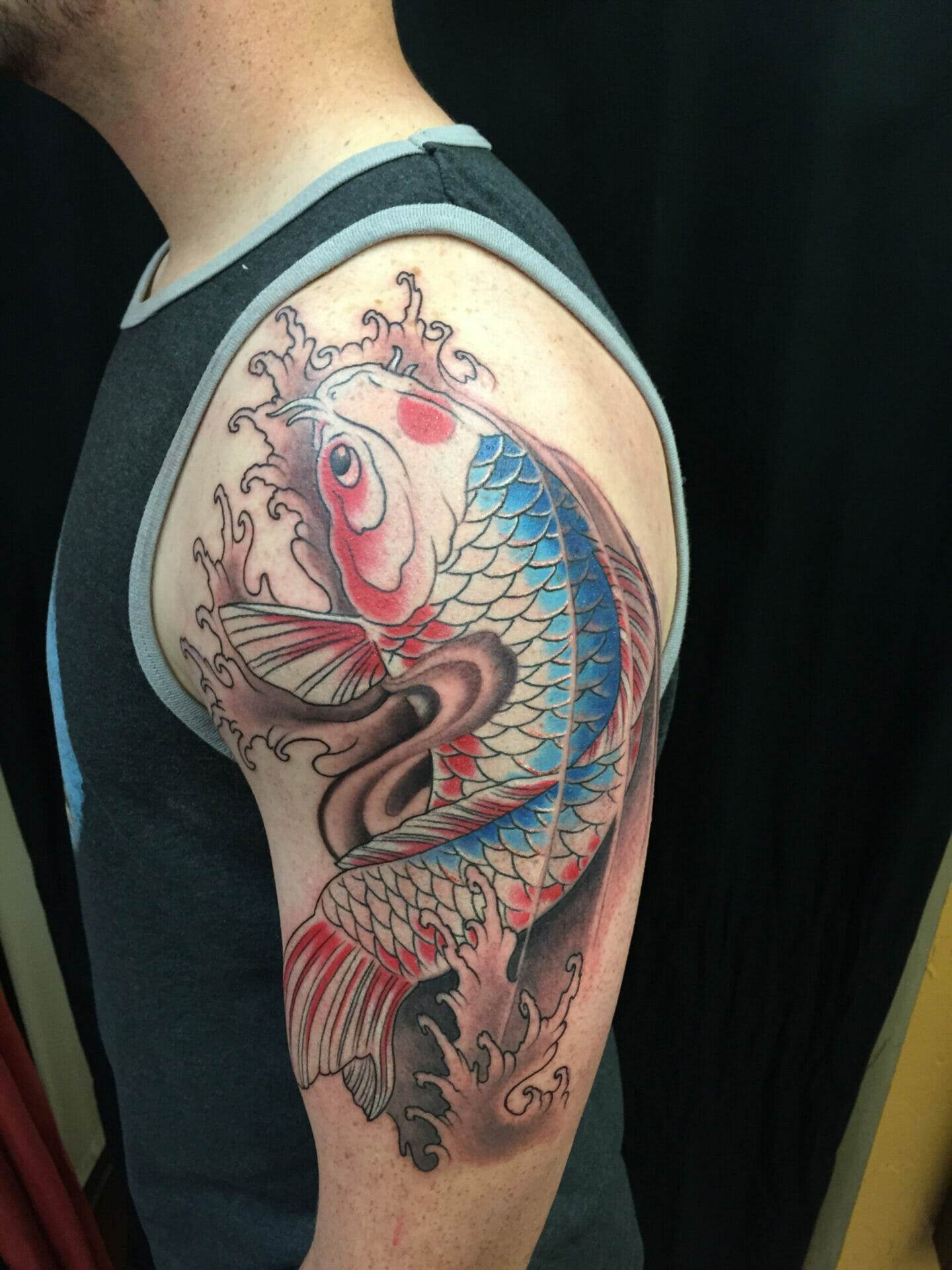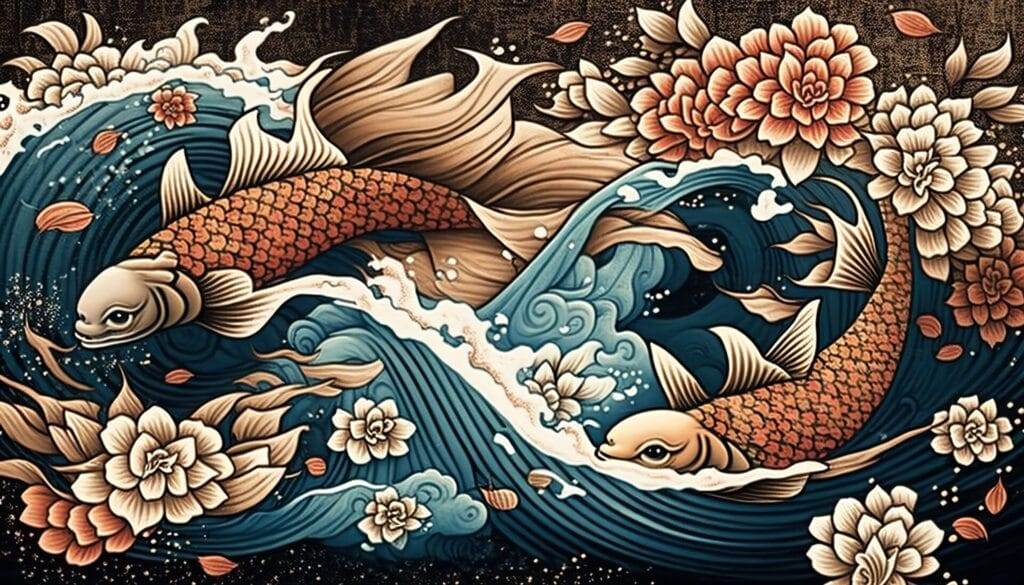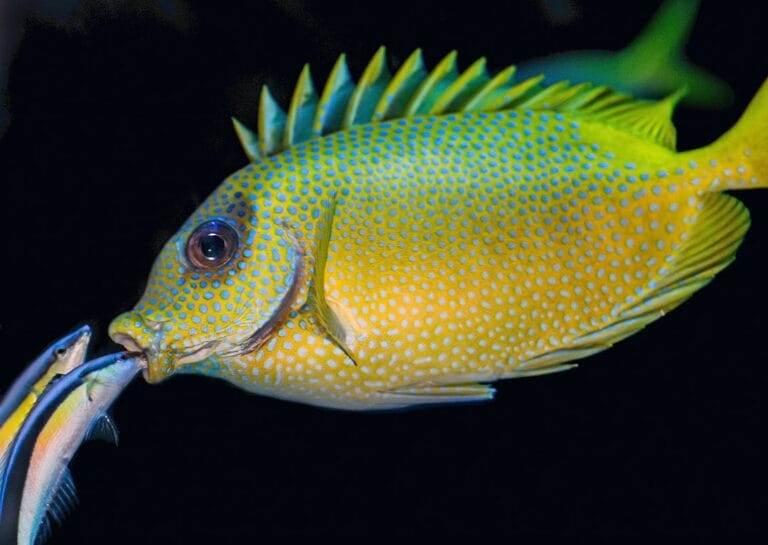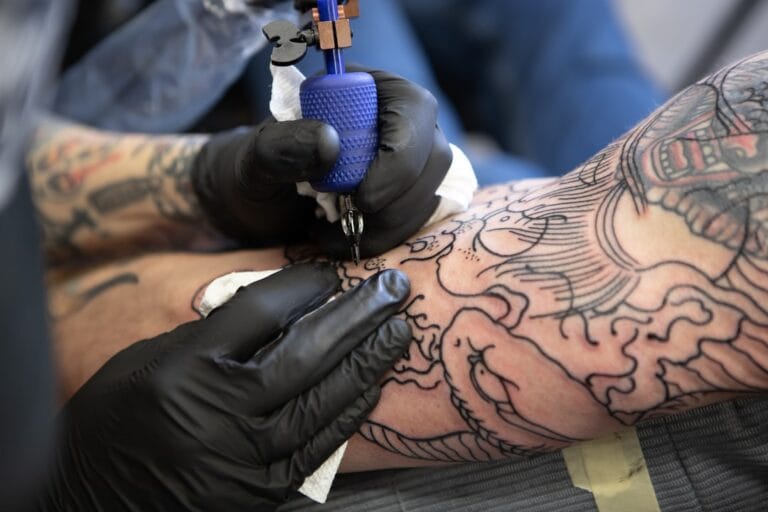
Japanese tattoo art has captivated the Western world with its unique style and symbolism. What was once a traditional art form in Japan has now become a global phenomenon, with people from all walks of life embracing the beauty and intricacy of Japanese tattoos. From celebrities to everyday individuals, Japanese tattoo art has gained immense popularity and has become a significant part of Western tattoo culture.
The allure of Japanese tattoo art lies in its distinct style, characterized by bold lines, vibrant colors, and intricate details. The designs often feature traditional Japanese motifs such as dragons, koi fish, cherry blossoms, and geisha. Each element holds deep symbolism and meaning, making Japanese tattoos not just visually stunning but also rich in cultural significance.
Key Takeaways
- Japanese tattoo art has a rich history and cultural significance that dates back centuries.
- The emergence of Japanese tattoo art in Western culture has had a significant impact on the tattoo industry as a whole.
- Japanese tattoo art is known for its intricate designs and deep symbolism, often representing themes such as nature, mythology, and spirituality.
- Japanese tattoo art has become increasingly popular in the Western world, with many people seeking out skilled artists to create their own unique designs.
The History of Japanese Tattoo Art and Its Significance

Japanese tattoo art, known as irezumi, has a long and storied history that dates back thousands of years. In ancient Japan, tattoos were used as a form of punishment for criminals. However, over time, tattoos became associated with spirituality and protection. They were believed to ward off evil spirits and bring good fortune.
Traditional Japanese tattooing techniques involve using a hand-held tool called a tebori, which consists of multiple needles attached to a wooden or metal handle. The artist dips the needles into ink and then manually punctures the skin to create the desired design. This method requires immense skill and precision, resulting in tattoos that are not only visually striking but also deeply meaningful.
The Emergence of Japanese Tattoo Art in Western Culture
The introduction of Japanese tattoo art to the Western world can be traced back to the 18th century when explorers and sailors began bringing back stories and images of these exotic tattoos from their travels to Japan. However, it wasn’t until the late 19th century that Japanese tattoo art gained significant attention in the West.
During this time, Japanese immigrants started to settle in the United States, particularly in cities like San Francisco. These immigrants brought with them their rich cultural heritage, including the art of tattooing. Japanese tattoo artists began setting up shops and attracting a clientele that was fascinated by the beauty and symbolism of their work.
The Influence of Japanese Tattoo Art on Western Tattooing
| Year | Event | Metric |
|---|---|---|
| 1820s | First recorded instance of Japanese tattooing in the West | N/A |
| 1870s | Japanese tattooing becomes popular among Western sailors and travelers | N/A |
| 1890s | Western tattoo artists begin incorporating Japanese designs into their work | N/A |
| 1950s | Western tattoo artists begin traveling to Japan to study traditional Japanese tattooing techniques | N/A |
| 1970s | Western tattoo artists begin incorporating Japanese tattooing techniques, such as shading and color blending, into their work | N/A |
| 1990s | Japanese tattooing becomes more widely accepted in the West, leading to an increase in popularity of Japanese-style tattoos | N/A |
| 2010s | Japanese-style tattoos become one of the most popular tattoo styles in the West | N/A |
Japanese tattoo art has had a profound influence on Western tattooing, shaping the style and technique of many contemporary tattoo artists. The bold lines, vibrant colors, and intricate details of Japanese tattoos have become sought after by tattoo enthusiasts around the world.
One of the most significant contributions of Japanese tattoo art to Western tattooing is the use of large-scale designs that cover entire limbs or even the entire body. This style, known as bodysuit or full-body tattoos, has become increasingly popular in recent years. It allows for a more cohesive and visually striking design that tells a story or represents a specific theme.
Japanese Tattoo Art and Its Popularity in the Western World
Japanese tattoo art has experienced a surge in popularity in the Western world in recent years. It is no longer confined to tattoo enthusiasts; it has also gained mainstream appeal. Many people are drawn to the beauty and symbolism of Japanese tattoos, as well as the skill and artistry required to create them.
Social media has played a significant role in spreading awareness of Japanese tattoo art. Platforms like Instagram have allowed artists to showcase their work to a global audience, attracting followers and clients from all over the world. This increased visibility has contributed to the growing popularity of Japanese tattoo art and has helped establish it as a respected and admired form of artistic expression.
The Meaning and Symbolism behind Japanese Tattoo Art

Japanese tattoo art is rich in symbolism, with each motif carrying its own meaning. Dragons, for example, symbolize strength, wisdom, and protection. Koi fish represent perseverance and determination, as they are known for swimming upstream against strong currents. Cherry blossoms symbolize the transient nature of life and the beauty of impermanence.
These motifs hold deep cultural significance in Japan. Dragons are revered creatures in Japanese mythology, believed to possess supernatural powers. Koi fish are associated with perseverance and overcoming adversity, as they transform into powerful dragons when they reach the top of a waterfall. Cherry blossoms, on the other hand, are a symbol of the fleeting nature of life and are often associated with samurai warriors who embraced the concept of living in the present moment.
The Role of Japanese Tattoo Art in Western Fashion and Pop Culture
Japanese tattoo art has had a significant impact on Western fashion and pop culture. Its bold and visually striking designs have been embraced by fashion designers, musicians, and celebrities alike.
In the world of fashion, Japanese tattoo-inspired designs have become increasingly popular. From streetwear brands to high-end fashion houses, many designers have incorporated Japanese tattoo motifs into their collections. These designs add an edgy and unique element to clothing and accessories, appealing to those who want to make a bold fashion statement.
In pop culture, Japanese tattoo art has also made its mark. Musicians such as Rihanna and Justin Bieber have prominently displayed their Japanese-inspired tattoos, further popularizing the art form. Japanese tattoo motifs have also been featured in movies, TV shows, and video games, cementing their place in Western pop culture.
Japanese Tattoo Art and Its Impact on Western Art and Design
Japanese tattoo art has had a significant impact on Western art and design across various mediums. Its bold lines, vibrant colors, and intricate details have influenced graphic design, illustration, and fine art.
In graphic design, the influence of Japanese tattoo art can be seen in the use of bold lines and vibrant colors to create visually striking compositions. Many designers draw inspiration from traditional Japanese motifs to create unique and eye-catching designs.
In illustration, Japanese tattoo art has inspired artists to explore intricate details and storytelling through their work. The use of traditional Japanese motifs and symbolism adds depth and meaning to their illustrations, creating visually captivating pieces.
In fine art, Japanese tattoo art has been embraced by artists who seek to push the boundaries of traditional art forms. Many contemporary artists incorporate elements of Japanese tattooing techniques into their work, blurring the lines between tattoo art and fine art.
The Connection between Japanese Tattoo Art and Pacific Beach Culture
Pacific Beach, located in San Diego, California, has become a hub for Japanese tattoo art in the Western world. The area is home to numerous tattoo shops that specialize in Japanese tattooing techniques and designs. These shops attract both locals and tourists who are drawn to the beauty and cultural significance of Japanese tattoos.
Pacific Beach’s connection to Japanese tattoo art can be traced back to the early 20th century when Japanese immigrants settled in the area. They brought with them their rich cultural heritage, including the art of tattooing. Over the years, Pacific Beach has become synonymous with Japanese tattoo art, attracting artists and enthusiasts from all over the world.
Conclusion:
Japanese tattoo art continues to captivate the Western world with its unique style, symbolism, and cultural significance. From its origins in ancient Japan to its current popularity in the Western world, Japanese tattoo art has left an indelible mark on tattoo culture, fashion, pop culture, and art and design.
The beauty and intricacy of Japanese tattoos, combined with their deep symbolism and cultural significance, have made them highly sought after by tattoo enthusiasts and mainstream culture alike. The influence of Japanese tattoo art can be seen in various aspects of Western culture, from fashion to fine art.
If you’re interested in exploring the vibrant world of watercolor tattoos, you’ll love this article on Redemption Ink. “Watercolor Tattoos: Adding a Splash of Vibrancy to Your Skin” delves into the unique technique of watercolor tattoos and how they can bring a burst of color to your body art. Discover the beauty and creativity behind this artistic style by clicking here.
FAQs
What is Japanese tattoo art?
Japanese tattoo art, also known as irezumi, is a traditional form of body art that involves using needles to insert ink into the skin to create intricate designs and patterns.
What is the history of Japanese tattoo art?
Japanese tattoo art has a long and rich history dating back to the Jomon period (10,000 BCE – 300 BCE). It was initially used for spiritual and decorative purposes, but later became associated with criminality and was banned in Japan in the late 19th century.
How did Japanese tattoo art influence Western culture?
Japanese tattoo art has had a significant influence on Western culture, particularly in the realm of tattooing. Many Western tattoo artists have been inspired by the intricate designs and techniques of Japanese tattoo art, and have incorporated them into their own work.
What are some common motifs in Japanese tattoo art?
Some common motifs in Japanese tattoo art include dragons, koi fish, cherry blossoms, samurai warriors, and geishas. These motifs often have symbolic meanings and are used to convey specific messages or values.
What are some famous examples of Japanese tattoo art in Western culture?
Some famous examples of Japanese tattoo art in Western culture include the work of tattoo artists such as Horiyoshi III, Shige, and Horitomo. Additionally, many celebrities, such as David Beckham and Angelina Jolie, have Japanese-inspired tattoos.






